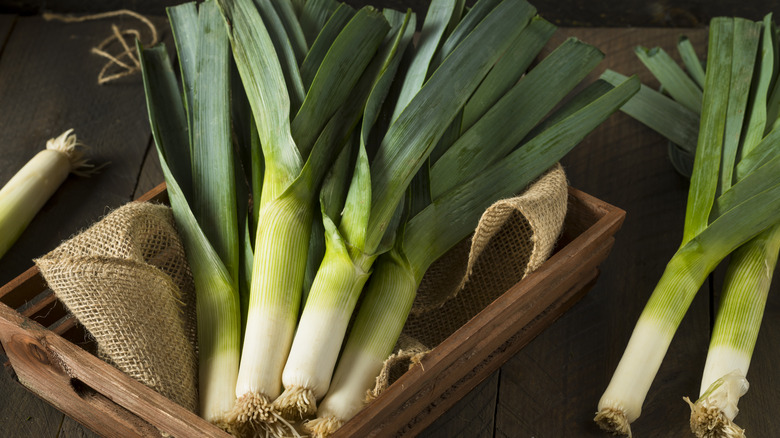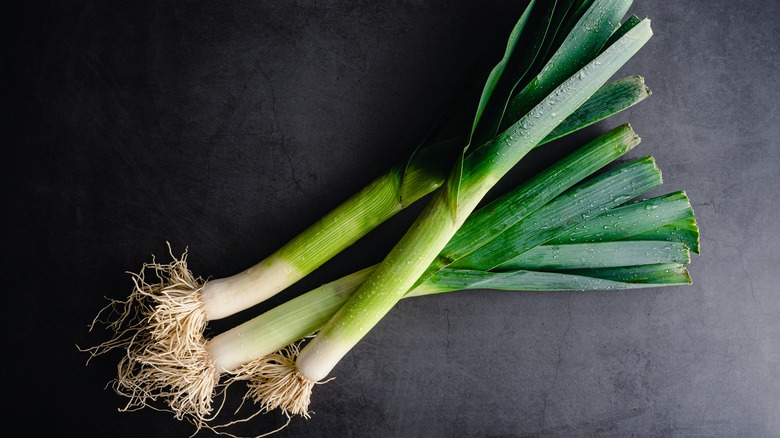How To Pick The Most Useful Leeks At The Store
Leeks are probably one of the most underrated alliums. Mild and herbaceous, with a sweetness that's atypical of garlic cloves and punchy onions, the vegetable is a culinary wonder. Yet, it's often misunderstood and sometimes even misused by being discarded and unnecessarily wasted. So, in order to make the most out of the lengthy and layered stalks, knowing which leeks to pick up during your grocery haul is key.
Whether you're in the market for one leek or quite literally a bunch, the rules for what to look for remain the same. Search for ones with roots that are left intact, stalks that are sturdy and straight, and dark green leaves that aren't wilted or yellowing. Once you've confirmed that leeks are at their freshest, don't be worried by their tendency to be a bit muddy — the next hurdle is picking the leek that will prove the most useful for your intended culinary endeavor.
Since the majority of leek-based recipes tend to focus on using the tender white and pale green portions of the allium, it's best to select leeks with longer stalks and lesser amounts of dark green leaves. Aim for stalks with at least 8 inches of white or light-green coloring as this will provide you with a more usable portion of the veggie, creating less waste. Likewise, opting for a single stalk with a longer neck and limited leaves also means you won't need to purchase as many leeks, ultimately leading to more money in your pocket.
Making the most out of a leek doesn't have to be difficult
Although the dark and woody part of a leek often ends up in the trash, the reality is that even this less desirable portion can serve a purpose. Great to flavor stocks, the dark leaves can also even be sautéed until tender and served as a side dish or worked into a herby sauce. But, even if your goal is to use these trimmings, it's still important to choose wisely. Since larger leeks with thicker stalks and an abundance of green leaves tend to be tougher and fibrous, it's often worth your while to choose leeks that are on the slimmer side.
Though you can cut off the dusty and soil-stained roots of a leek, leaving behind just the nutty base, you can also repurpose those stringy ends. So long as you select a leek with long enough roots, you can trim them from the base and then deep fry them for a crunchy and funky garnish. Regardless of what part of the leek you use and how you decide to experiment with it, always make sure to give the vegetable a good cleaning. After all, there's nothing worse than ruining a dish because you forget to wash an ultra gritty leek.

